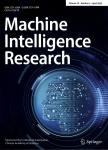版权所有:内蒙古大学图书馆 技术提供:维普资讯• 智图
内蒙古自治区呼和浩特市赛罕区大学西街235号 邮编: 010021

作者机构:Department of Electromechanical EngineeringUniversity of MacaoTaipaMacao 853China Department of Industrial and Systems EngineeringThe Hong Kong Polytechnic UniversityKowloonHong Kong 852China Tianjin Key Laboratory of the Design and Intelligent Control of the Advanced Mechatronical SystemTianjin University of TechnologyTianjin 300384China
出 版 物:《International Journal of Automation and computing》 (国际自动化与计算杂志(英文版))
年 卷 期:2019年第16卷第6期
页 面:748-760页
核心收录:
学科分类:12[管理学] 1201[管理学-管理科学与工程(可授管理学、工学学位)] 08[工学]
基 金:supported by National Natural Science Foundation of China (Nos. 51575544 and 51275353) the Macao Science and Technology Development Fund (No. 110/2013/A3) Research Committee of University of Macao (Nos. MYRG2015-00194-FST and MYRG203 (Y1-L4)-FST11-LYM)
主 题:Multi-objective optimization parallel kinematic manipulator transmission property non-dominated sorting genetic algorithm(NSGA Ⅱ)
摘 要:Multi-objective dimensional optimization of parallel kinematic manipulators(PKMs) remains a challenging and worthwhile research endeavor. This paper presents a straightforward and systematic methodology for implementing the structure optimization analysis of a 3-prismatic-universal-universal(PUU) PKM when simultaneously considering motion transmission, velocity transmission and acceleration transmission. Firstly, inspired by a planar four-bar linkage mechanism, the motion transmission index of the spatial parallel manipulator is based on transmission angle which is defined as the pressure angle amongst limbs. Then, the velocity transmission index and acceleration transmission index are derived through the corresponding kinematics model. The multi-objective dimensional optimization under specific constraints is carried out by the improved non-dominated sorting genetic algorithm(NSGA Ⅱ), resulting in a set of Pareto optimal solutions. The final chosen solution shows that the manipulator with the optimized structure parameters can provide excellent motion, velocity and acceleration transmission properties.